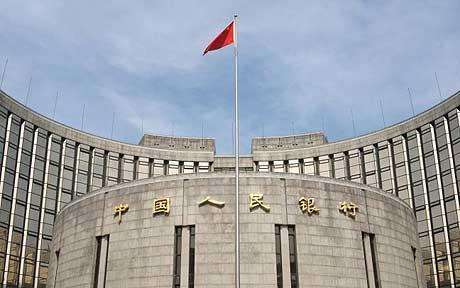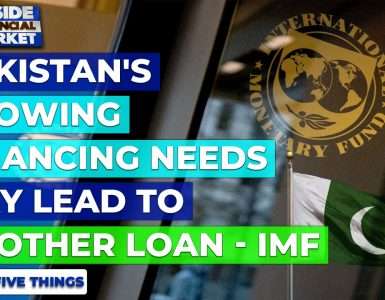 EXCLUSIVE-CHINA CENTRAL BANK READY TO CUT BANK RESERVES IF GROWTH FALTERS-SOURCES
EXCLUSIVE-CHINA CENTRAL BANK READY TO CUT BANK RESERVES IF GROWTH FALTERS-SOURCES
BEIJING, March 12 (Reuters) – China’s central bank is prepared to take its strongest action since 2012 to loosen monetary policy if economic growth slows further, by cutting the amount of cash that banks must keep as reserves, sources involved in internal policy discussions say.
A cut would be triggered if growth slips below 7.5 percent and towards 7.0 percent, they said, and would come on top of money market operations and currency intervention via state banks that traders say has already loosened monetary conditions.
Apart from supporting a stumbling economy, the stronger action of cutting bank reserves would provide a cushion against any shocks from financial reforms that the central bank is widely expected to push through this year, including a widening of the yuan’s trading band to give the currency more room to rise or fall each day and allowing banks more room to set deposit rates.
“The economy faces big downward pressure,” said a senior economist with the State Information Centre, a top think-tank affiliated to the National Development and Reform Commission, the country’s top economic planning agency.
“Cutting RRR is likely if economic growth slows further. But they may still need to wait and see the first-quarter economic data,” said the economist, who requested anonymity due to the sensitivity of the matter. The RRR is the reserve requirement ratio, the official name for bank reserves.
The concern is that the financial reforms could weigh on an already slowing economy, so the central bank will be prepared to free up some cash by cutting bank reserves if need be to give the economy support, the sources at top government think-tanks said.
Private economists have suspected that the central bank might be willing to cut the RRR, but the sources provided the first confirmation that the central bank is discussing such an option.
Since May 2012, major banks have had to keep a fifth of their cash as reserves.
Most of the top think-tank economists believe the central government would lean on fiscal policy to do its part to support growth, repeating the mini-stimulus seen last year when Beijing made targeted infrastructure investments, among other measures.
Trade data last weekend shook markets globally by showing an unexpected fall in exports in February of 18 percent compared with a year earlier. Purchasing managers’ indexes this year have suggested growth in factory-sector activity – for years the engine of China’s economy – is stalling.
China’s consumer inflation hit a 13-month low of 2 percent in February, a sign that slowing growth rather than rising prices poses a bigger risk to the economy. (Full Story)
However, taking these figures as a clear indicator of the economy’s health is difficult because data for the first few months of the year is distorted by the Lunar New Year holidays.
While financial markets have taken the data at face value to suggest the economy is struggling, some economists say a clear picture will not emerge until data for March is published. And that data will not be released until the middle of April.
Still, other private-sector economists say the actions of the central bank in letting interest rates fall and the yuan decline has been in effect a policy easing, perhaps suggesting the central bank is concerned about the economy’s health.
The weighted average of the benchmark seven-day repo CN7DRP=CFXS stood at 2.26 percent earlier on Tuesday. Average rates have not been so low since 2012. The yuan has fallen sharply since the middle of February and dropped the most on Monday since April 2008. (Full Story)
Analysts believe the PBOC is conducting a short-term attack on speculators, who have been pouring money into China to cash in on what was a steadily rising yuan and high-yields on debt. But the measures also loosened monetary conditions.
“It’s like killing two birds with one stone,” said Zhao Xijun, an influential economist at Renmin University in Beijing.
Some of the sources said cutting bank reserves would help to offset capital outflows if money starts moving offshore either in reaction to the central bank’s attack on speculators or if it later widens the trading band of the currency. Most expectations point to the band being doubled in scope to 2 percent either side of a daily trading reference point set by the central bank.
“A time window for yuan reform to increase two-way fluctuations has arrived and I believe the central bank will seize the opportunity,” said a former central bank researcher, who now works for a think tank and is involved in the policy conversations.
“Slight yuan depreciation is not necessarily a bad thing. We could see some hot money outflows and, if possible, we could lower RRR a bit to offset money outflows.”
Many analysts believe annual economic growth in the first-quarter of 2014 will slow to 7.5 percent from 7.7 percent in the previous quarter and 7.8 percent in the third quarter of 2013.
But they said any policy action, including a potential cut in the RRR, would be modest to ensure financial markets do not think the central bank is backing away from its reform agenda.
Premier Li Keqiang has hinted at some policy flexibility when he unveiled this year’s economic growth target of 7.5 percent in his so-called work report delivered to the parliament last week.
The government is aiming to shift the economy’s reliance on the investment and exports that fuelled a double-digit pace of expansion for three decades to one that leans more on services and consumption, which it hopes will feed more sustainable long-term growth.
It has said repeatedly an economic slowdown will be a necessary outcome of reform. But analysts said the bottom line for Beijing will be to ensure growth is sufficient to produce enough job creation to prevent social unrest.
The government wants to create 10 million new jobs in 2014 and Li has said that the economy must grow 7.2 percent annually to do that. Some 13 million new jobs were created last year when the economy grew 7.7 percent.
The central bank is keeping a “prudent” monetary policy in 2014 – the catch word used since late 2010 to encapsulate at first modest policy tightening and then modest loosening following the global financial crisis.
The PBOC raised the RRR 12 times in less than two years by late 2011, among other tightening steps. It then cut the RRR three times between late 2011 and May 2012. The RRR now stands at 20 percent, near its record level of 21.5 percent.
The PBOC is a more reform-minded institution compared to some other agencies of the Chinese government, arguing that reforms will play a vital role in supporting economic growth over the longer term, analysts said.










Add comment